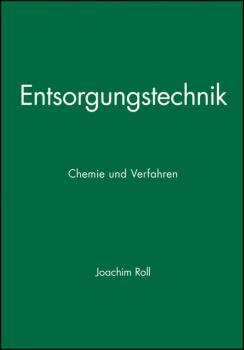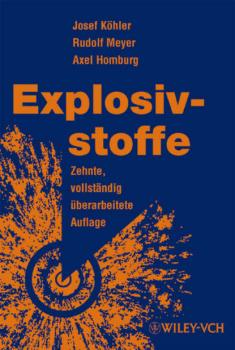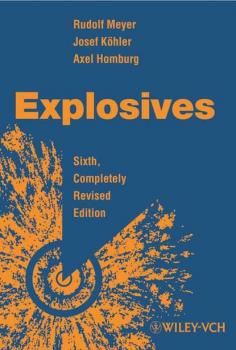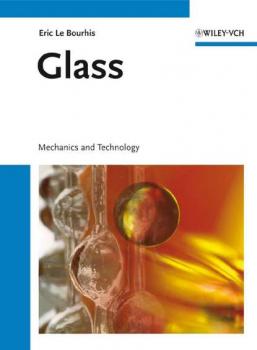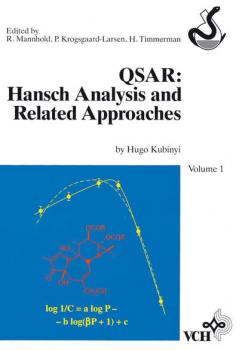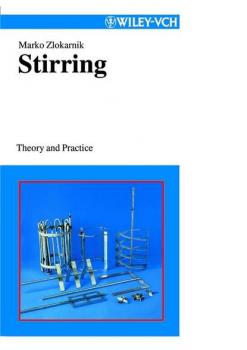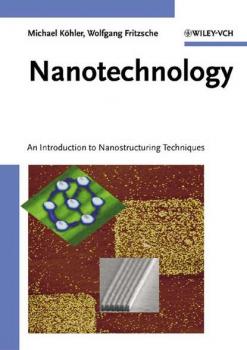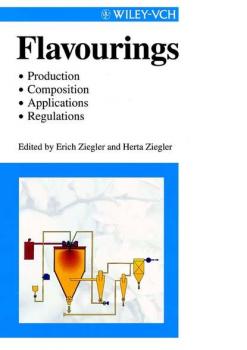ТОП просматриваемых книг сайта:
Прочая образовательная литература
Различные книги в жанре Прочая образовательная литература, доступные для чтения и скачиванияАннотация
Entsorgungstechnik – Chemie und Verfahren provides an overview of current methods of waste treatment, exhaust air purification and cleaning up old industrial sites … so that we are not stranded with our rubbish. The chemical fundamentals of the processes are described to provide better understanding of the reactions occurring while, at the same time, demonstrating the application of chemistry of the technology of disposal. Practical examples aid the assessment and choice of suitable disposal processes. The close relationship between chemistry and process makes this book of interest to both students of technical environmental protection and of chemistry. Furthermore, it offers those practically involved in the disposal industry the possibility of informing themselves concerning new developments in disposal technology.
Аннотация
Aus Rezensionen voriger Auflagen: Die zehnte Auflage dieses Nachschlagewerkes ist erneut erweitert und aktualisiert worden, das bewahrte Konzept wurde beibehalten. Der Textteil beschreibt ausfuhrlich mehr als 550 Begriffe in alphabetischer Reihenfolge, darunter uber 120 mit Strukturformel und Daten versehene chemische Verbindungen mit Explosivcharakter. Zu fast jeder Verbindung werden die wichtigsten chemisch-physikalischen und sicherheitstechnischen Kenndaten aufgefuhrt; die Gefahrgutregularien wurden grundlich uberarbeitet. Der Leser findet au?erdem Angaben zu den Herstellungsverfahren und Verwendungsmoglichkeiten dieser Stoffe sowie zu etwa 70 Additiven, Brennstoffen und Oxidantien. Etwa 1500 Eintrage im Schlagwortregister, die Angabe der englischen und franzosischen Ubersetzungen und die Erklarung von Kurzbezeichnungen machen dieses Buch zu einem umfassenden und aktuellen Lexikon. Es eignet sich fur Fachleute, die in irgendeiner Form mit Explosivstoffen zu tun haben, aber auch fur Interessenten, wie Ubersetzer, Behorden und Patentanwalte. ' Ein Buch, das in mehr als 60 Jahren 8 Auflagen erlebt hat, bedarf keiner besonderen Empfehlung…' Archiv fur Kriminologie
Аннотация
This practice-oriented handbook surveys current knowledge on the prediction and prevention of adverse drug reactions related to off-target activity of small molecule drugs. It is unique in collating the current approaches into a single source, and includes several highly instructive case studies that may be used as guidelines on how to improve drug development projects. With its large section on ADME-related effects, this is key knowledge for every drug developer.
Аннотация
This world-famous work has been enlarged and updated without tampering with its tried and tested format. Around 500 alphabetically ordered, monographic entries consider the physicochemical properties, production methods and safe applications of over 120 explosive chemicals, while discussing 70 fuels, additives and oxidizing agents and describing the relevant test methods. The extensive thermodynamic data has been thoroughly updated and now also provided on a CD-ROM compiled by the Fraunhofer Institute of Chemical Technology. This excerpt from the ICT Thermodynamical Database not only includes additional thermodynamic data, and references to further reading, but also features enhanced search facilities. Other key features include a 1,500-entry combined index and glossary with terms and abbreviations in English, French and German, conversion tables and numerous literature references. A handy reference for explosive experts and also for translators, public authorities and patent lawyers. From reviews of previous editions: '… This wealth of information and an index that comprises some 1500 keywords and several conversion tables make this a unique source of knowledge for anybody working with explosives.' (Propellants, Explosives, Pyrotechnics)
Аннотация
This is the first book to discuss the correlation between the performance of industrial processes and practice-relevant properties, such as strength and optical properties. Interdisciplinary in his approach, the author discusses both the science and technology, starting with glass past and present, its structure, and rheology. The sections on properties include mechanical strength and contact resistance, ageing, mechanics of glass processes, the production and control of residual stresses, high-tech producers and current research and development. Applications covered include glazing, packaging, optical glass, glass fibers for reinforcement, and abrasive tools.
Аннотация
Finding the new remedy for a certain disease: an inspired goal. QSAR, an invaluable tool in drug design, aids scientists to attain this aim. This book is a long-awaited comprehensive text to QSAR and related approaches. It provides a practice-oriented introduction to the theory, methods and analyses for QSAR relationships, including modelling-based and 3D approaches. Hugo Kubinyi is a leading expert in QSAR. Readers will benefit from the author's 20 years of practical experience, from his careful calculations and recalculations of thousands of QSAR equations. Among the topics covered are: – physiocochemical parameters – quantitative models – statistical methods – Hansch analysis – Free Wilson analysis – 3D-QSAR approaches The book can readily be used as a textbook due to its high didactic value and numerous examples (over 200 equations and 1100 references).
Аннотация
This world-famous reference work has been enlarged and updated without tampering with its tried and tested format. Around 500 alphabetically ordered, monographic entries consider the physicochemical properties, production methods and safe applications of over 120 explosive chemicals; discuss 70 fuels, additives and oxidizing agents; and describe test methods. The extensive thermodynamic data have been thoroughly updated and for the first time are also provided in electronic format. The included CD-ROM was compiled by the Fraunhofer Institute of Chemical Technology (Pfinztal, Germany) and represents an excerpt from the ICT Thermodynamical Database. Not only additional thermodynamic data, and references to further reading, but also enhanced search facilities are provided. Other key features include: the 1500-entry combined index and glossary (comprising terms and abbreviations in English, French and German), conversion tables and many literature references. This book is suitable for explosive experts and also for translators, public authorities and patent lawyers. From reviews of previous editions: '… This wealth of information and an index that comprises some 1500 keywords and several conversion tables make this a unique source of knowledge for anybody working with explosives.' (Propellants, Explosives, Pyrotechnics)
Аннотация
Stirring is one of the most important operations in process technology. No chemical exists that has non been submitted to a mixing process during its synthesis. Furthermore, stirring is important for the pharmaceutical and food industries, too. The most important mixing operations are applied to homogenize miscible liquids, to intensify the heat transfer between a liquid and the heat exchanger, and to perform mass transfer in multiphase systems, to whirl up solid particles in fluids and to disperse immiscible liquids. This book discusses in detail the above listed operations, taking into consideration also different rheological behaviour of the system treated (Newtonian and non-Newtonian). For each stirring task reliable scale-up rules are presented. In addition, mixing in pipes is discussed in great detail. Since there are so many aspects it is almost impossible for the user to get and keep an overview. Therefore, this book presents more than 730 references and covers publications until the end of the year 2000 for everybody who needs to know more details.
Аннотация
Expectations of a technological revolution are associated with nanotechnology, and indeed the generation, modification and utilization of objects with tiniest dimensions already permeates science and research in a way that the absence of nanotechnology is no longer conceivable. It has progressed to an independent interdisciplinary field, its great success due to the purposeful combination of physical, mechanical and molecular techniques. This book starts out with the most important fundamentals of microtechnology and chemistry on which the understanding of shaping nanoscale structures are based, then a variety of examples illustrate the fabrication of nanostructures from different materials. Subsequently, methods for characterization of the generated structures are presented to the reader. Through this fascinating introduction, both scientists and engineers gain insights into the «other side» of nanotechnology.
Аннотация
The demand for flavourings has been constantly increasing over the last years as a result of the dramatic changes caused by a more and more industrialised life-style: The consumer is drawn to interesting, healthy, pleasurable, exciting or completely new taste experiences. This book draws on the expert knowledge of nearly 40 contributors with backgrounds in both industry and academia and provides a comprehensive insight into the production, processing and application of various food flavourings. Established flavours produced commercially are summarized on a large scale. Methods of quality control and quality management are discussed in detail. The authors also focus on conventional and innovative analytical methods employed in this field and, last but not least, on toxicological, legal, and ethical aspects. Up-to-date references to pertinent literature and an in-depth subject index complete the book.

